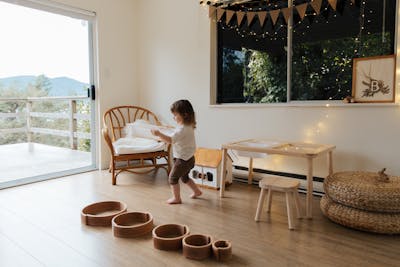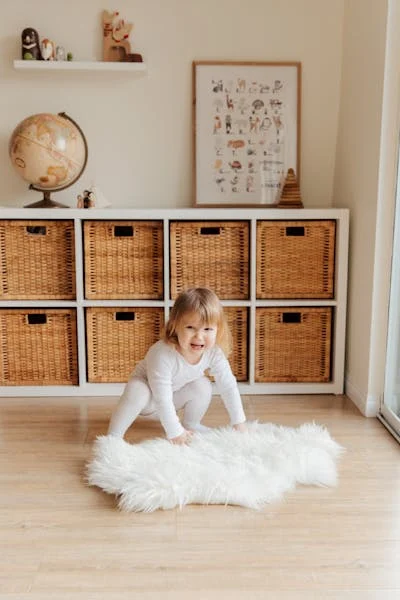Do you want to get your baby walking? We have got you covered! The journey of parenthood is quite enchanting. It involves watching your little ones take tiny steps into a world of growth and discovery. You bear witness as your bundle of joy embarks on a path of wobbly steps. This magical moment fills you with delight. It is an experience worth savoring.
All parents consider the first magical steps their little ones take a considerable achievement. This sign indicates that your baby is gradually approaching the toddler stage. However, many parents often wonder how early a baby is required to walk. Some even wonder whether early walking is linked to physical performance and intelligence.
However, no research has shown any relationship between early walking and emerging as the new Nikola Tesla or Usain Bolt. This article will examine the signs that your baby is on the move. This guide will also examine these adorable moments that pave the way for a lifetime of adventure.
Table of Contents
Becoming a Daring Adventurer

You may perceive your little one ready to nosedive from a couch to stand. This shows a daring confidence to explore the world of walking.
Yet, it must be stressed that these signs should alert you. However, it is an excellent sign of development that your bundle of joy is about to try new things. They need the confidence in their ability to walk independently. These are the moments you support them. You encourage them to act on their instincts.
Be ready to catch them before they fall. Ensure that the environment in which they explore is a safe one.
Pulling Up to Stand
Pulling up on furniture to stand is one of the initial signs that a baby is gearing up for those first steps. They develop a newfound ability to pull themselves up to a standing position. This often occurs around the age of 9 to 12 months. You might notice your baby using furniture or your legs as support to stand upright.
This demonstrates a growing strength in their leg muscles. They begin to desire to explore the world from a more elevated perspective. Over time, these little exercises guide your baby to stand independently. From there, they begin to take those magical steps.
You can support your baby’s first steps by saying “up” as they pull up. You may also demonstrate to them how it is done.
Whining and Changing Sleep Patterns

Some parents often find it amusing when they discover that their babies’ fussiness and extra-long naps are signs of taking their first steps.
As explained earlier, walking represents a significant developmental milestone for your baby. Your baby’s mind begins to work double time, and these developmental leaps may affect their mood and how long they sleep.
These moments are often difficult for parents. However, knowing that these are signs of taking first steps brings solace. There is a respite that things will return to normal once the walking milestone has been achieved.
Standing Alone Briefly
A significant milestone on the path to walking is when a baby starts standing unassisted, even if only for a few seconds. A baby’s ability to stand briefly typically occurs as they progress in their physical development.
A baby needs to develop sufficient core strength before standing. This is achieved through activities like tummy time. The baby lies on its stomach, gradually strengthening its neck and core muscles. You might catch your little one letting go of support and staying upright momentarily after 11 to 14 months.
This indicates a growing level of strength and coordination. It is also a sign of a willingness to take those initial steps.
Improved Balance
Your baby starts progressing towards walking. Then, you begin to observe an enhancement in their balance. Initially, they might rely on a wide stance and use their arms to help stabilize themselves. Over time, you’ll notice a shift towards a more controlled posture. Maintaining balance is a crucial precursor to taking those initial steps.
How to Encourage Your Little One to Keep Walking

The joy of watching your little ones take their first steps is immense. However, your baby requires patience and encouragement to move at their own pace. Some ways to encourage your little ones to keep walking are introduced as follows:
1. Adopt The Use of Positive Reinforcements
Celebrate each step your child takes with enthusiasm and positive words. Clap and smile to create a positive association with walking. Children respond well to praise. After all, it boosts their confidence and motivates them to continue.
2. Use Engaging Toys
Introduce your baby to toys that inspire movement. There are push toys, pull-along toys, or toys with wheels. These toys can captivate your child’s interest and make walking more enjoyable. Choose sturdy items. They should provide support while your child explores.
3. Create an Interactive Environment.
Designate a walking area with colorful and interactive elements. Use soft play mats or incorporate sensory elements like textured surfaces. An engaging environment can make walking a fun and sensory-rich experience.
4. Walk with Your Baby
Your child needs you in their walking adventure. Join them as they take their first steps, hold their hand, or walk alongside them. Your presence offers both physical and emotional support, making the activity more enjoyable. They see you walking and become more motivated to imitate and continue.
5. Set Up Obstacle Courses
Design simple obstacle courses using cushions or pillows. These obstacles can add an element of excitement to walking. As a result, your child begins to develop balance and coordination. As they navigate through the course, they become motivated to keep going.
Remember that patience is vital. Your child will progress at their own pace. You must make walking a positive and engaging experience. Doing so creates a supportive environment that encourages your little one to enthusiastically explore their newfound skill.
Baby Walking in a Nutshell

Walking is a simple action of putting one foot after the other. However, it is a monumental achievement for a baby. It requires their confidence and physical strength. The need for a safe environment to practice must be stressed more.
You’re not wrong to affirm your baby’s smartness to achieve this milestone independently. Yet, your support can prove significant in helping your child gain an enjoyable walking experience. This comprehensive guide has provided you with some signs that might indicate your little one’s readiness to walk. However, allow your child to walk at their own pace.


